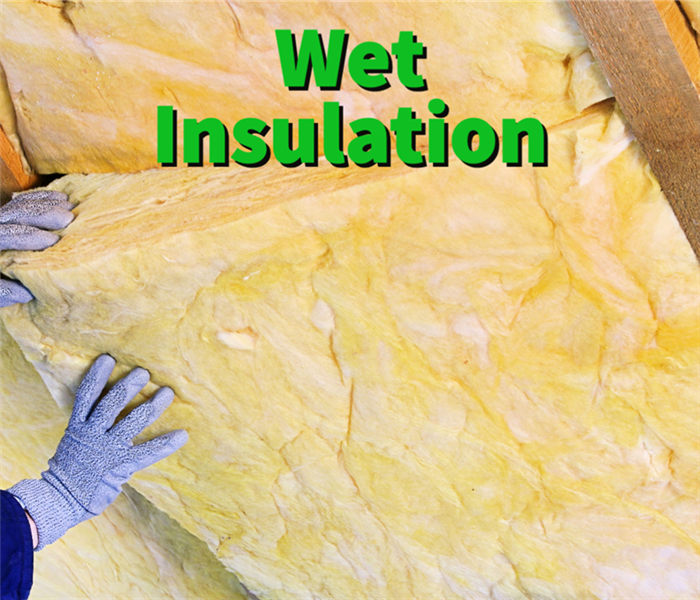Wet Insulation: The 2 Best Times to Replace Over Dry
3/4/2022 (Permalink)
Wet insulation can be a severe problem, especially if you don't know when to replace it and instead dry it out.
Many times that a property has water damage, you will notice water stains on the ceilings, walls, and floors. Other times you may not have any external evidence of water damage, but you will notice a musty smell in certain areas of your home.
One effect of water damage is wet insulation. Wet insulation can lead to serious mold growth, decreased energy efficiency, and structural damage. This blog post will discuss the dangers of wet insulation and the best time to replace the damaged insulation rather than dry it out.
What is insulation?
Insulation is a material installed in buildings to reduce heat loss and prevent the formation of condensation on cold surfaces. There are several different types of insulation, but all insulation has two main components: a thermal barrier and a moisture barrier.
The thermal barrier prevents heat loss, while the moisture barrier prevents water vapor from passing through the insulation. However, when water vapor passes through the insulation, it can cause the insulation to become wet, leading to several problems.
What are the dangers of wet insulation?
There are several dangers associated with wet insulation. The most severe is when wet insulation leads to mold growth. Mold damage may lead to structural issues that can cause a building to be less stable.
The two options in handling wet insulation
When a property has wet insulation, there are only two choices: dry or replace the insulation.
Drying the insulation is a less expensive option and is usually the best course of action if the damage is not severe and caught soon enough. Wet insulation can commonly dry out within three to five days with the proper use of dehumidifiers and air movers. Replacing the insulation is a more expensive option but may be necessary.
The two times to replace wet insulation
There are two specific times when it is best to replace wet insulation rather than try to dry it out:
1) When the insulation is saturated with highly contaminated water. Category two and three water damage to insulation are two categories where the insulation needs to be replaced. Category two and three water damage is water that has been contaminated with fecal matter, urine, blood, or contains microorganisms. All items affected by these two categories of water damage need to be replaced to avoid the spread of disease. When choosing a restoration contractor for contaminated water damages, you should select a restoration company that prioritizes safety.
2) When there is mold growth on or around the insulation. In some cases, mold growth will not be visible. To be safe, you should consider getting your insulation tested by a third-party environmental consultant.
If the insulation falls into either of these categories, it is best to replace it rather than dry it out. The risks of drying out the insulation are too high, and the possible benefits do not outweigh the risks. If you are unsure what category of water has damaged your insulation, don't hesitate to contact a water restoration company to inspect the damaged material further.
Why call SERVPRO
You should highly consider contacting the professionals at SERVPRO of Union, Towns, Fannin & Gilmer Counties regarding wet insulation. Our SERVPRO professionals have the knowledge and experience to handle any water damage situation.
Our professionals are trained by the IICRC and have the equipment and resources to dry out your property quickly and safely. We also offer various services that can help you restore your property, including content cleaning, pack-outs, and storage.
If you think you may have water damage, please don't hesitate to contact us. We are available 24/7 to help.






 24/7 Emergency Service
24/7 Emergency Service
